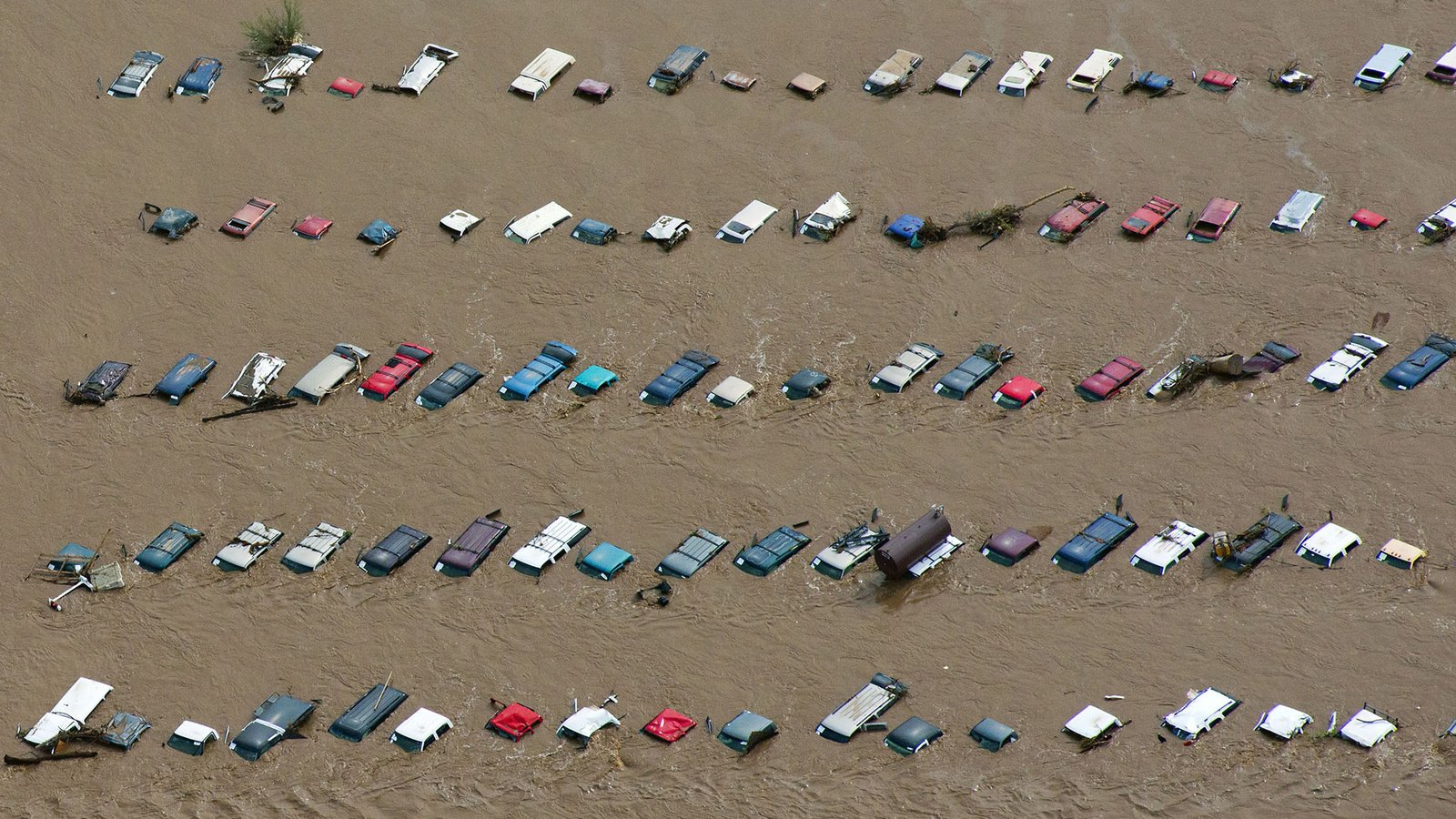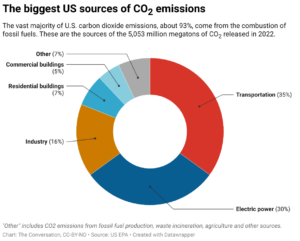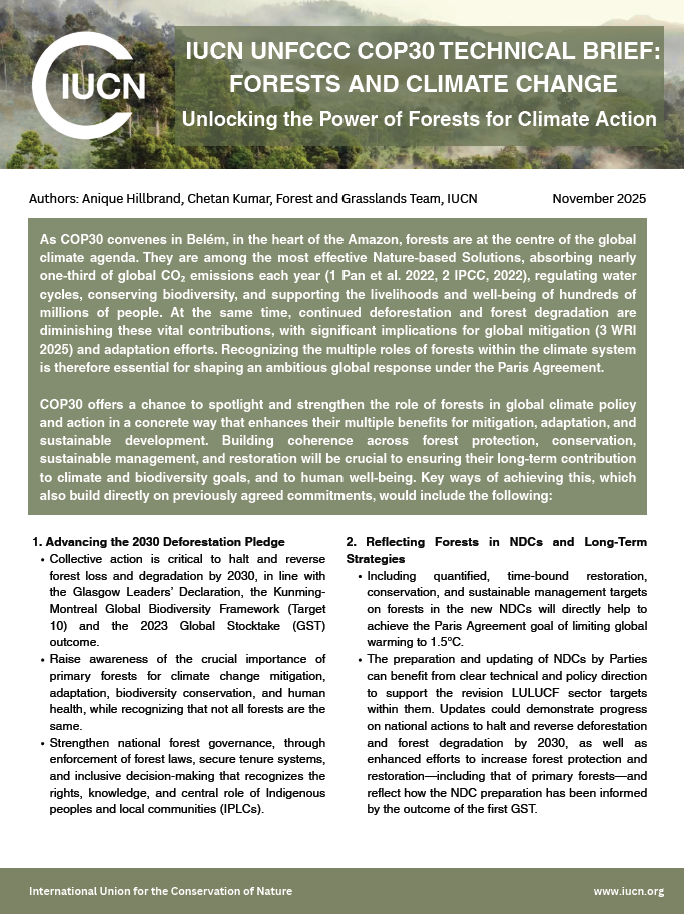Only 3 years left – new study warns the world is running out of time to avoid the worst impacts of climate change – The Conversation

Report on the State of Global Climate Action and its Implications for Sustainable Development Goals
1.0 Introduction: Critical Juncture for Climate Commitments and the 2030 Agenda
The global community is facing an unprecedented climate crisis, characterized by the fastest rate of warming on record. This situation poses a direct and severe threat to the achievement of the Sustainable Development Goals (SDGs). Despite the legally binding commitments of the Paris Agreement, government action has been critically slow. With the upcoming Conference of the Parties (COP30), there is an urgent need for nations to align their climate action plans with broader sustainable development objectives to mitigate catastrophic impacts on human well-being and planetary health.
2.0 Status of Nationally Determined Contributions (NDCs) and Progress on SDG 13
The Paris Agreement mandates that all 197 signatory nations submit updated climate action plans, known as Nationally Determined Contributions (NDCs), to limit global warming to 1.5°C. These NDCs are the primary mechanism for achieving SDG 13 (Climate Action). However, compliance has been alarmingly low.
2.1 Submission Rates and Compliance
- As of the February 2025 deadline, only 25 countries have submitted their updated NDCs.
- These submissions represent approximately 20% of global greenhouse gas emissions.
- In Africa, a continent disproportionately affected by climate change, only three nations (Somalia, Zambia, and Zimbabwe) have submitted their plans.
- Analysis suggests that only one submitted plan, that of the United Kingdom, is currently compatible with the 1.5°C target of the Paris Agreement.
2.2 The Role of G20 Nations
The G20 countries are responsible for approximately 80% of global emissions, making their commitments essential for global progress. The lack of comprehensive action from this group severely hampers efforts under SDG 17 (Partnerships for the Goals).
- Only five G20 members have submitted their 2035 plans: Brazil, Canada, Japan, the United Kingdom, and the United States.
- The forthcoming NDCs from the European Union, China, and India will be critical indicators of global climate leadership.
- Furthermore, only 10 of the updated NDCs reaffirm or strengthen commitments to transition away from fossil fuels, a critical step for achieving SDG 7 (Affordable and Clean Energy).
3.0 Scientific Assessment: The Earth’s Vital Signs and Impending Risks
The 2024 Indicators of Global Climate Change report provides stark evidence of an accelerating crisis. The data underscores the failure to curb emissions and the resulting consequences for the global climate system.
3.1 Key Climate Indicators
- Human-caused global warming reached 1.36°C in 2024.
- Combined with natural climate variability, the average global temperature increase reached 1.52°C, surpassing the Paris Agreement’s aspirational limit.
- Record-high atmospheric concentrations of carbon dioxide, methane, and nitrous oxide continue to rise.
- The remaining global carbon budget is projected to be exhausted in less than three years at current emission rates, effectively closing the window to stay within the 1.5°C threshold without significant overshoot.
4.0 Socio-Economic Impacts and Setbacks for Multiple SDGs
The intensification of climate change directly undermines progress across numerous Sustainable Development Goals, with developing regions, particularly Africa, facing the most severe consequences. A failure to integrate climate action with development policy risks reversing decades of progress.
4.1 Direct Impacts on Sustainable Development
- SDG 1 (No Poverty) & SDG 10 (Reduced Inequalities): Climate impacts are pushing vulnerable populations further into poverty. Conversely, aligning NDCs with development strategies could lift an estimated 175 million people out of poverty. Developed nations must honor their commitment to provide climate finance to support a just transition in developing countries.
- SDG 2 (Zero Hunger): Extreme weather is devastating agriculture. Projections for Africa indicate a potential 30% drop in crop revenue, threatening food security across the continent.
- SDG 6 (Clean Water and Sanitation): Climate-induced water stress is escalating, with forecasts suggesting an additional 50 million people in Africa could face water scarcity.
- SDG 3 (Good Health and Well-being): The doubling of global heatwaves and other extreme weather events leads to increased mortality, heat stress, and the spread of disease.
- SDG 8 (Decent Work and Economic Growth): Climate change disrupts livelihoods and destabilizes economies, jeopardizing long-term growth and employment.
5.0 Recommendations for Urgent and Integrated Action
To avert the worst impacts of climate change and salvage the 2030 Agenda, immediate, decisive, and globally coordinated action is required. Governments must treat climate data with the same urgency as economic indicators and translate scientific warnings into robust policy.
5.1 Immediate Priorities
- Accelerate NDC Submission: All 172 remaining countries must submit ambitious, credible, and 1.5°C-aligned NDCs well before COP30.
- Strengthen Global Partnerships (SDG 17): The G20, under South Africa’s presidency, must prioritize mobilizing climate finance for developing nations and lead by example with strong emissions reduction targets.
- Ensure a Just Transition (SDG 7 & SDG 8): NDCs must include clear and strengthened commitments to phase out fossil fuels and invest in renewable energy, ensuring the transition is equitable for all communities.
- Leverage International Forums: The upcoming UNFCCC Climate Week in Addis Ababa must be used to finalize NDC support, unlock climate finance, and ensure that climate action promotes equity and sustainable development across Africa.
Analysis of Sustainable Development Goals in the Article
1. Which SDGs are addressed or connected to the issues highlighted in the article?
- SDG 13: Climate Action: This is the central theme of the article, which focuses on global warming, greenhouse gas emissions, the Paris Agreement, and the need for national climate action plans (NDCs).
- SDG 1: No Poverty: The article directly links climate action to poverty reduction, stating that aligning climate plans with development goals could “lift 175 million people out of poverty.”
- SDG 7: Affordable and Clean Energy: The article discusses the need for countries to “move away from fossil fuels” and finance a “transition to a low-carbon economy,” which is a core component of this goal.
- SDG 17: Partnerships for the Goals: The article emphasizes the importance of international cooperation through frameworks like the UNFCCC, COP30, the Paris Agreement, and the G20 to address the climate crisis.
- SDG 8: Decent Work and Economic Growth: The article highlights the “long-term risks and costs to the global economy” posed by climate change and mentions that implementing NDCs is vital for a “functioning global society” and economies.
2. What specific targets under those SDGs can be identified based on the article’s content?
-
SDG 13: Climate Action
- Target 13.1: Strengthen resilience and adaptive capacity to climate-related hazards and natural disasters in all countries. The article mentions that “Africa is being hit particularly hard by climate change and extreme weather” and that governments must show how they “plan to adapt to the impacts that climate change will bring.”
- Target 13.2: Integrate climate change measures into national policies, strategies and planning. The entire article revolves around this target, focusing on the submission of “updated national climate plans” or “Nationally Determined Contributions” (NDCs) to the UN.
- Target 13.a: Implement the commitment undertaken by developed-country parties to the United Nations Framework Convention on Climate Change (UNFCCC). The article calls on “developed countries” to “take the lead in presenting ambitious mitigation efforts and in providing finance for other countries to decarbonise and adapt.”
-
SDG 1: No Poverty
- Target 1.5: By 2030, build the resilience of the poor and those in vulnerable situations and reduce their exposure and vulnerability to climate-related extreme events. The article supports this by stating that effective climate plans could “lift 175 million people out of poverty” and noting that the “African continent is now facing its deadliest climate crisis in over a decade.”
-
SDG 7: Affordable and Clean Energy
- Target 7.2: By 2030, increase substantially the share of renewable energy in the global energy mix. This is implied by the article’s concern that “just 10 of the updated nationally determined contributions have reaffirmed or strengthened commitments to move away from fossil fuels.”
-
SDG 17: Partnerships for the Goals
- Target 17.16: Enhance the global partnership for sustainable development. The article is framed around global partnerships such as the “annual global climate change conference of the parties (COP30),” the “Paris Agreement,” and the role of the “G20,” which is “responsible for around 80% of global emissions.”
3. Are there any indicators mentioned or implied in the article that can be used to measure progress towards the identified targets?
-
For SDG 13: Climate Action
- Indicator for Target 13.2: The number of countries that have submitted Nationally Determined Contributions (NDCs). The article explicitly states, “only 25 countries… have submitted their plans,” and “In Africa, they are Somalia, Zambia and Zimbabwe.”
- Indicator for Target 13.2: Total greenhouse gas emissions. The article mentions “record high levels of greenhouse gas emissions,” the G20’s responsibility for “around 80% of global emissions,” and the need to cut emissions to stay within the “remaining carbon budget.”
- Indicator for Target 13.1: Rise in global temperature. The article reports that “human-caused global warming reached 1.36°C in 2024” and that average global temperatures hit “1.52°C,” which is a key metric for climate impact.
-
For SDG 7: Affordable and Clean Energy
- Indicator (Implied): Number of NDCs with commitments to phase out fossil fuels. The article provides a direct measure of this, stating, “just 10 of the updated nationally determined contributions have reaffirmed or strengthened commitments to move away from fossil fuels.”
-
For SDG 1: No Poverty
- Indicator (Implied): Number of people lifted out of poverty through climate-aligned development. The article provides a potential metric by noting that such alignment “could lift 175 million people out of poverty.”
4. Table of SDGs, Targets, and Indicators
| SDGs | Targets | Indicators |
|---|---|---|
| SDG 13: Climate Action |
|
|
| SDG 1: No Poverty |
|
|
| SDG 7: Affordable and Clean Energy |
|
|
| SDG 17: Partnerships for the Goals |
|
|
| SDG 8: Decent Work and Economic Growth |
|
|
Source: theconversation.com

What is Your Reaction?
 Like
0
Like
0
 Dislike
0
Dislike
0
 Love
0
Love
0
 Funny
0
Funny
0
 Angry
0
Angry
0
 Sad
0
Sad
0
 Wow
0
Wow
0











































































